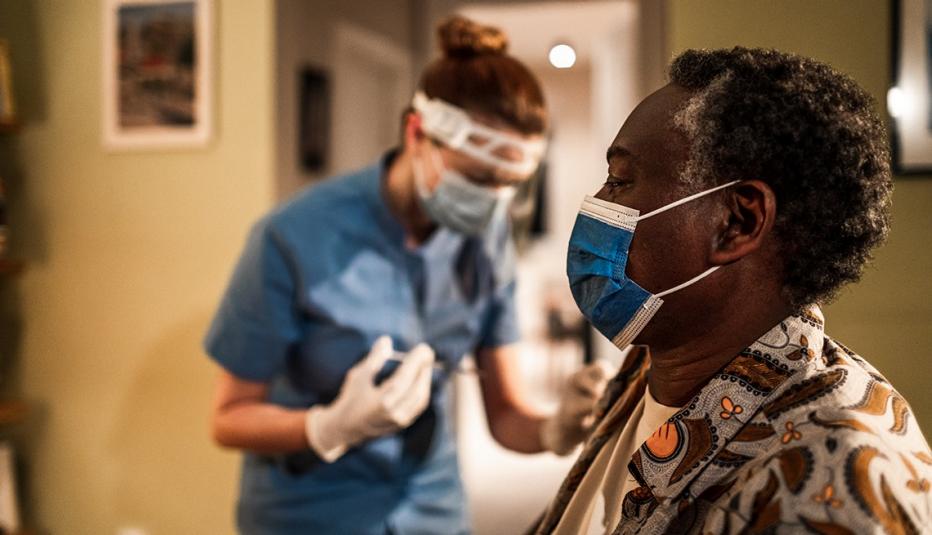AARP Hearing Center
Nursing facilities have a long history of administering influenza and pneumococcal immunizations to protect residents against preventable infection and limit community spread. These immunization programs have yielded high but unchanging resident vaccination rates for more than a decade, consistently falling short of the Centers for Disease Control and Prevention’s (CDC) goal of 90 percent. Further, federal and state regulations and facility policies have resulted in nursing facility immunization programs that vary from state to state and facility to facility.


COVID-19 presents an opportunity for facilities to make administrative and programmatic improvements across immunization programs. This report examines the pre-pandemic immunization environment in nursing facilities, explores how facilities administered immunization during different periods of the pandemic, and highlights issues that states and facilities should consider as they evaluate whether and how to modify or improve facility immunization programs.
Pre-COVID-19 Immunization Environment
Over time, changes in federal and state regulation, and in individual facilities’ policies, have led to a patchwork of immunization programs that differ in size, scope, and intent. In 2005, the Centers for Medicare & Medicaid Services put in place a rule requiring facilities to offer influenza and pneumococcal immunization to residents. Thirty-one states and the District of Columbia have since built on the federal immunization regulations with a range of efforts to boost immunizations. Since 2006, the average immunization rate among all residents is 75 percent for influenza and 74 percent for pneumococcal.
See the full report for appendices: (A) Nursing Facility Resident Vaccination Rates by State, (B) State Regulations for Nursing Facility Residents and (C) State Regulations for Nursing Facility Staff
Immunization Environment during COVID-19
During the 2020–21 influenza season, facilities nationwide reported that 74 percent of residents received an influenza vaccine, higher than the previous year’s 59 percent, likely in response to concerns about a “double pandemic” of influenza and COVID-19. Nursing facilities also continued to deliver pneumococcal vaccines during the pandemic; from April 2020 to March 2021, facilities reported that 65 percent of residents had an up-to-date pneumococcal vaccine, comparable to the previous year’s rate of 66 percent.
At the end of 2020, shortly after the Federal Drug Administration authorized COVID-19 vaccines, nursing facilities had the opportunity to participate in the Pharmacy Partnership for Long-Term Care Program.
For resident immunization, the partnership was successful. According to the CDC, from December 2020 to April 23, 2021, more than 1.5 million long-term care facility (both nursing and assisted living facilities) residents were fully immunized, with 46 percent of the doses going to residents of nursing facilities. In the first month alone, 78 percent of nursing facility residents received at least one dose, which had a direct and immediate impact on the rates of COVID-19 cases and deaths among residents.
Immunization levels of nursing facility staff did not match those of residents. In nursing homes, only 38 percent of staff received at least one dose of the vaccine in the first month of the partnership, a figure that slowly increased over the ensuing months.
As COVID-19 immunizations moved in April 2021 into a maintenance phase–with facilities responsible for administering vaccines to residents who were not fully immunized, staff and residents who had previously refused the vaccine, new resident admissions, and new staff hires–immunization rates for staff and residents have not improved significantly from the initial vaccination period. Meanwhile, death and case rates have recently begun to increase as the country confronts the rapidly spreading delta variant and growing concerns that COVID-19 vaccine efficacy may be waning.
Post-COVID-19 Immunization Environment
Further research to identify best practices among facility immunization programs, including how to accommodate multiple vaccinations currently provided on different schedules and how to navigate varying state regulations, can help policy makers and administrators evaluate whether and how to modify or improve existing immunization programs. Additional considerations may include the duplication of roles and responsibilities of onsite clinical staff across immunization programs, the coordination of immunization tracking systems for residents and staff, and the management of vaccine supplies to ensure that facilities are able to administer onsite resident and staff immunizations at the proper times (e.g., unvaccinated residents receive a COVID-19 and a pneumococcal vaccine upon admission, if necessary).





























































